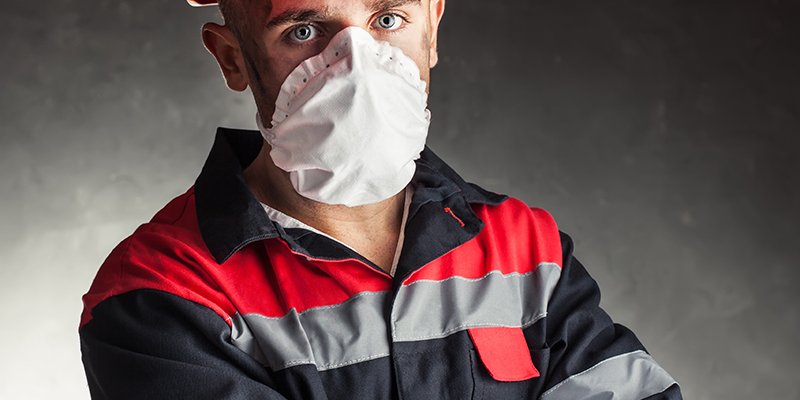
The prohibition of owning chametz is stated in the Torah "there shall be seen no leaven or sourdough in your homes", which appears several times in the Torah, albeit with slightly different wording. One who possesses chametz, even if not in his home (e.g., a warehouse, or an office) transgresses a Biblical prohibition (technically two, as the Torah says in one place "there shall not be found", and in another, "there shall not be seen"). By the Oral Torah, we are informed that the prohibition refers to chametz as large as the bulk of an egg, or admixtures containing significant amounts of chametz. Crumbs are NOT a problem. Dust is not chametz. The excessive cleaning efforts of Jewish housewives, and the huge efforts of Jewish men to search and destroy every possible deposit of unidentified dirt in the house, has no basis in Halacha. I know many people who prepare their homes weeks, or even months, in advance, only to have an anxiety attack when a child goes into a room with a cookie in his hand.
The Torah commands that we remove chametz on the day before Passover, not three months before Passover! The anxiety becomes palpable; but is unnecessary. The Talmud makes clear that even if HUGE amounts of chametz are in our homes, declaring it null and void, while sincerely determining that we will have no benefit from it ever, is sufficient to satisfy the Biblical requirement. We are required to make such a declaration before Passover, both on the evening before, as well as the following morning. However, as it was feared that someone may forget his declaration, and absent-mindedly eat some of it, by rabbinic law, one is required to physically remove and destroy all significant (more than the size of an egg) amounts of chametz from one's possession.
The Talmud relates an incident in which one of the rabbis was bringing a load of chametz grain to the Land of Israel, and was unexpectedly delayed at sea. Until Passover. He sold all of his chametz to a non-Jew, buying it back after Passover. Based on this precedent, it became common in all Jewish communities, that owners of businesses with large amounts of chametz sell their entire stock to a non-Jew, usually through a rabbi with expertise in the halakhot of sales, and it is bought back afterwards. The premises of the business would be rented to the non-Jew, so that the chametz would not be in the Jew's domain at all. Although this was originally an emergency measure to prevent "great loss", the custom became, in nearly all communities, to allow each householder to sell his chametz in this way. He would simply go to a rabbi, and sign a power of attorney to authorize this transaction. The householder would then put the chametz into a separate closet or a portion of a room that would be partitioned off and rented to the non-Jew. This became standard about 300 years ago. One rabbi, Eliyahu of Vilna (known as the Vilna Gaon or GRA), strongly objected to this practice, as he felt it was not a legitimate sale. Because of his view, the non-Hassidic Ashkenazi community in Israel, as well as many "Yeshivish" communities around the world either do not sell their chametz, or else sell only non-chametz items which they fear may contain some chametz. Most Hassidic and Sephardi communities do so freely. Chabad has a special method of sale, which essentially removes all real halachic objections. (I sell mine through Chabad. This can be done for free through the chabad.org website).
It must be remembered that once the declaration of nullification is made, the physical removal is only because of the decree "lest we find a nice pastry..." A may be lenient on a doubt concerning a rabbinic decree. The sale of chametz removes one's concern for "great loss" especially in our era of refrigeration and packaged foods, where everyone has much food which would go to waste), as well as taking away much anxiety. Remember, we are supposed to rejoice in our festivals!